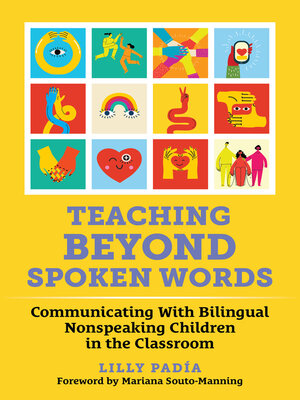Teaching Beyond Spoken Words
ebook ∣ Communicating With Bilingual Nonspeaking Children in the Classroom · Language and Literacy
By Lilly Padía

Sign up to save your library
With an OverDrive account, you can save your favorite libraries for at-a-glance information about availability. Find out more about OverDrive accounts.
Find this title in Libby, the library reading app by OverDrive.



Search for a digital library with this title
Title found at these libraries:
| Library Name | Distance |
|---|---|
| Loading... |
This book presents strategies to help educators understand, communicate with, and support their multilingual nonspeaking children. We often tell parents and caregivers to carry over specific skills and strategies that are taught to their children in classrooms and provider sessions, but rarely, if ever, do we encourage educators to carry over strategies that are occurring in the child's family and community. Centered on case studies of four families of nonspeaking bilingual children, this book demonstrates the vibrant communication systems families create to navigate daily life together. Each chapter includes teaching tools and blueprints for collaborating with students and families to best support bilingual nonspeaking learners—and all children—through expansive classroom communication. This resource includes graphic organizers and lesson materials for incorporating multimodal, multilingual communication practices into preschool, kindergarten, and elementary school classrooms and learning spaces.
Book Features:







